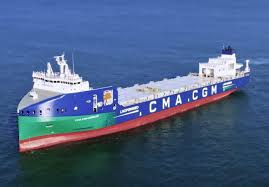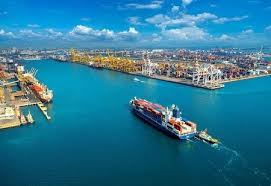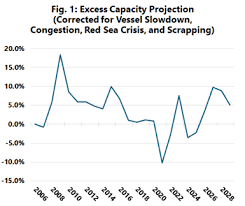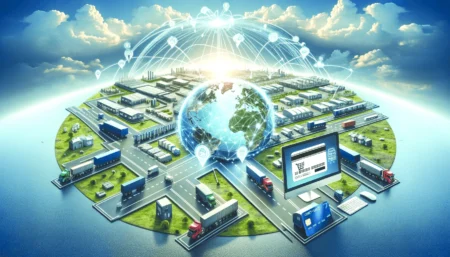India’s logistics and supply chain ecosystem is undergoing a transformation shaped by sustainability goals, geopolitical shifts, infrastructure reforms, digital technologies, and the resilience of the people who lead it. At Cargo Insights, we brought together diverse voices, from corporate veterans and policymakers to entrepreneurs and academicians, to understand the forces redefining the sector. Their reflections reveal not just challenges but also the immense opportunities awaiting India’s logistics industry.
Sustainability & Green Logistics

“As part of Indian Railways, we are accelerating rail electrification to make logistics greener and more efficient,” said Dr Jaideep Gupta, Additional Member (Railway Electrification) Railway Board, Ministry of Railways, Government of India. “Rail is already six times more energy-efficient than road transport. With the electrification of over 12,000 km of freight routes, we anticipate reducing carbon emissions by approximately 40 million tonnes annually. Beyond cost and efficiency, this is a commitment to sustainability, and it positions railways as a strategic partner for companies seeking greener operations. Businesses embracing rail transport today are already seeing lower fuel costs and improved delivery reliability.”

“Building resilience against global shocks requires localization as a core strategy. For companies with global operations across 100+ countries, the mantra is ‘look global, act local.’ This means investing in infrastructure within India and surrounding regions to secure resources and strengthen future risk mitigation, noted Tarun Verma, PLM Planning Manager America, Shell India Markets. “In aligning the energy sector with India’s green logistics future, fuel efficiency and energy transition are key. Companies are actively exploring alternative fuels such as hydrogen and biofuels, while also advancing sustainable practices in traditional oil and gas through innovations like RRBO (re-refined reusable oil). These shifts are essential to drive long-term efficiency and sustainability in India’s logistics ecosystem.”

From packaging, Girish Tuteja, VP – Global Logistics, Uflex, added: “Uflex operates manufacturing facilities across 12 locations worldwide and is a pioneer in flexible packaging. The packaging industry is experiencing phenomenal growth, driven by the increasing need for pre-packed products for retail customers. The company has observed an annual growth of approximately 8–10%. However, the logistics sector faces significant challenges. Global trade disruptions, particularly in exports to the U.S. (which accounts for nearly 20% of exports), have strained the supply chain. This situation is prompting manufacturers to explore alternative markets and consider tolling or contract manufacturing outside India; presenting both opportunities and risks for the domestic manufacturing industry.”
Global Shifts & Geopolitics

“The world is in flux. With BRICS expansion and IMEC corridors, India must remain agile to leverage global churn,” said Dr. Vandana Aggarwal, Chairperson, IFSCA Standing Committee on Finance for Aviation & Shipping, Gift City. “Government initiatives offer further growth opportunities. The inclusion of Africa in BRICS opens new avenues for Indian industry to establish strong trade links with an emerging growth center. Additional prospects arise from Central Asia, connecting India to Eastern Europe, Russia, and other European markets. The IMEC initiative, spanning three continents and multimodal networks, highlights the vital role of Indian logistics in supporting both outbound and inbound industry needs, ensuring the success of these strategic programs.”

Nihar Parida, Co-Founder, Ecodome Logistics observed, “Supply chains are on a continuous path toward resilience, shaped by global events and geopolitical disruptions. Building resilience requires agility, constant vigilance, and the ability to adapt to unforeseen challenges. Leveraging technology, data, and real-time insights is key to navigating disruptions and ensuring supply chains remain robust in the face of global shocks.”

Vipin Vohra, Chairman, Continental Carriers, reflected on his own experience: “Over the past 50 years, the industry has experienced many ups and downs. Early on, the company played a key role in bringing multinational companies into India when they were not yet allowed to operate here. In 1992, when India opened its doors to multinationals establishing their own offices, the company lost its agency business. Although many offered to buy the company, it was never sold. Some business and staff were lost, but the company continued to grow steadily year after year, demonstrating resilience and sustained success despite challenges.”
Policy, infrastructure & reforms

Padma Jaiswal, IAS, Secretary to Govt. of UT/State Union Territory of Puducherry, India, explained “The logistics sector contributes around 12% of India’s GDP and plays a critical role in job creation and economic continuity, as highlighted during the COVID-19 lockdowns. Last-mile connectivity, driven by gig workers, demonstrated how logistics underpins every sector of the economy, making it omnipresent and essential.
To enhance efficiency, the government has launched the 2022 Logistics Policy, created dedicated divisions under the Ministry of Commerce, and introduced initiatives such as Gati Shakti. Freight corridors, multimodal logistics parks, warehousing solutions, packaging consultancy, and inventory management frameworks are being developed to lower costs and strengthen infrastructure. Companies are encouraged to leverage this infrastructure and adopt emerging technologies like AI and blockchain, optimize supply chain forecasting, and align with standardized regulatory mechanisms issued by the government. These measures harmonize domestic logistics practices with global standards, ensuring India’s logistics sector becomes a pillar of economic growth.”

“Recognising railways and warehouses as industries is a game changer; it is unlocking new investments and innovations,” said Surendra Ahirwar, Executive Director Traffic Commercial, Ministry of Railways, Government of India. “Railways are more than a mode of transport; they are a major driver of economic growth and social mobility in India. The sector itself is an industry, requiring locomotives, wagons, coaches, tracks, stations, and extensive construction infrastructure. Railways provide passenger and freight services while catalyzing sustainable economic growth more effectively than other transport modes.
India aims to enhance the railways’ modal share, ensuring they become capacious, efficient, and cost-effective, complementing other transport modes like roadways. By leveraging its inherent sustainability, railways will continue to strengthen the logistics sector and contribute significantly to India’s vision of Viksit Bharat by 2047.”

Alok Bansal, CEO, BuildMyInfra, pointed to benchmarks: “BuildMyInfra specializes in designing and setting up warehouses, cold chains, and dark stores across India and Nepal, helping top logistics, e-commerce, and FMCG companies optimize operational efficiency.
Supply chains are the backbone of business, contributing 14% to India’s GDP. Resilience comes from technology adoption, reforms, and infrastructure development, making supply chains more active, tech-driven, and robust. India’s logistics sector is poised for growth due to rising consumption, government initiatives like Sagarmala and Bharatmala, enhanced corridors, improved road and shipping infrastructure, GST reforms, and the adoption of IoT and automation. These measures are driving cost efficiency, asset optimization, and greater operational capabilities, signaling a promising future for India’s logistics industry.”
Resilience, Outsourcing & Packaging
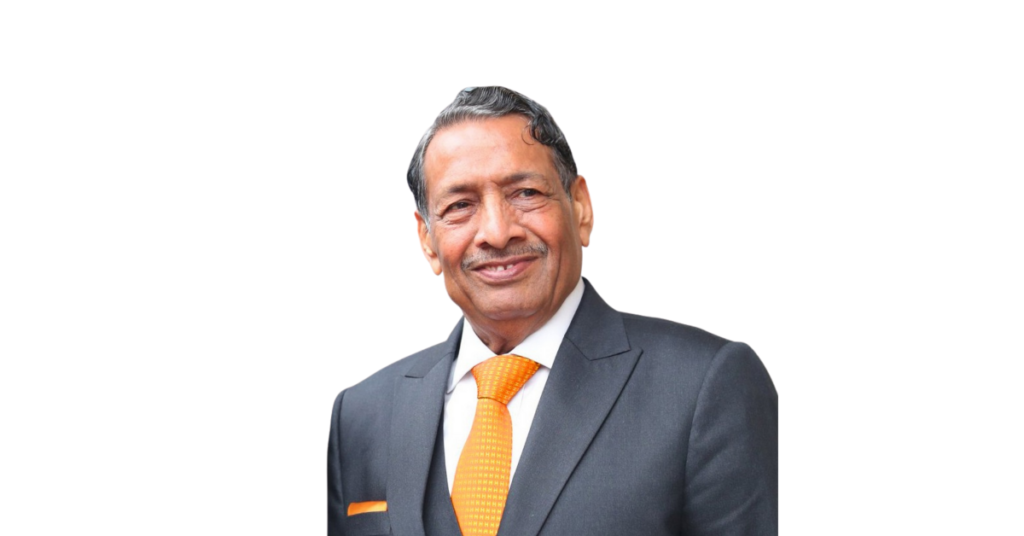
S.L. Sharma, Chairman, Skyways Group, cautioned: “Companies often overlook critical aspects when outsourcing logistics, leading to inefficiencies. Experienced players in the sector, operating since 1983 across air cargo, shipping, and transport services with 30 branches in India and eight offices abroad, highlight the importance of end-to-end management and global presence. The most overlooked bottleneck in Indian logistics is readiness to leverage reforms and infrastructure developments. With government initiatives transforming the sector, there is strong optimism that India’s logistics industry will grow rapidly, supporting the country’s rise to become the world’s third-largest economy in the near future.”

“Too often, outsourcing decisions are made on cost, not quality,” said Pankaj Gupta, Director, OW Logistics. “Long-term reliability is what sustains customer trust. Technology integration and monitoring of vendor performance can reduce service lapses by up to 15%.”Most companies focus only on the L1 cost model, but logistics should be managed on the QCD framework — quality, cost, and delivery — rather than just the lowest price.
Outsourcing is evolving toward true partnerships, where specialists handle every stage of the supply chain. Beyond vendor management, future-ready logistics will see outsourcing of warehouses, storage, packaging, and last-mile delivery. Companies are increasingly adopting this comprehensive approach, leveraging external expertise to enhance efficiency, optimize operations, and focus on core business activities, paving the way for a robust logistics ecosystem by Viksit Bharat 2047.”

“Balancing cost and quality in contracts remains a challenge for the sector,” noted Vishal Wadi, General Manager, Sequel Logistics. “Companies often focus solely on cost when selecting logistics providers, overlooking the importance of specialized expertise. While managing costs is essential, partnering with service providers who bring quality and domain knowledge ensures more effective and reliable operations.”

On packaging, Shailender Anand, CEO, Pronk India – A Company of Tri-Wall Japan, stressed: “Globally, industrial packaging has seen significant innovations, including nail-less boxes, metal-frame solutions, corrugation, and multi-ply alternatives to wood like OSB and MBF boards. In India, the sector remains largely unorganized, dominated by carpenters, but export-driven companies are now adopting these global standards to meet buyer expectations and reduce business losses. Integrating packaging with logistics helps minimize wastage and cost. Reusable, standardized boxes maximize container and truck space utilization, reduce material waste, and lower transportation costs. This approach ensures efficient movement of goods while promoting sustainability in the supply chain.”
Cold Chain & Pharma

Bharat Bhushan Rathi, Head of Supply Chain, Mankind Pharma, highlighted: “The key to balancing speed, cost, and reliability in cargo is agility. Companies must outperform competitors through efficient operations, cost optimization, and a focus on customer delight. Logistics should function as an interconnected web rather than a linear chain. A future-ready cold chain for farmers requires complete visibility across all transport modes; air, road, and ocean; with systems that provide real-time status and proactive insights, enabling anticipation of potential disruptions before they occur, ensuring seamless and efficient supply chain management.”
Learning from the Armed Forces

“A lot can be learnt from the Army. The Art of War is taught in management schools because the lessons apply equally to business,” said Lt Gen Dharam Vir Kalra, PVSM, AVSM (Retd). “Planning for a hundred contingencies and being ready for the 101st is critical. During operations, logistics teams must coordinate under stress, unpredictability, and urgency. The same lessons; resilience, agility, and teamwork, apply directly to corporate supply chains, especially during crises.”
Entrepreneurship & Growth Stories

Manoj Kumar Jain, Founder & Managing Director, Deep Blue Xpress & Sealair Freighters; Chairman, ACAAI shared, “The major bottlenecks in Indian logistics are infrastructure and regulatory challenges. Congested roads, limited approachability, and complex regulations in cities like Delhi and Mumbai make logistics operations difficult for service providers.
Despite these challenges, the sector is experiencing robust growth. Improvements in roads, dedicated freight corridors, and initiatives like Udaan and Gati Shakti are enhancing connectivity. The logistics industry has significant potential, with expected growth of 15–20% year-on-year. Experienced leaders have scaled companies from scratch to substantial enterprises and remain optimistic about future expansion and public listings.”
Vipin Vohra, Continental Carriers, recalled tough times: “Over the last 50 years in the industry, we have faced many ups and downs as a company. In the early days, we were the ones who brought leading multinational companies into India, at a time when they were not even allowed to operate here. But in 1992, when the country opened its doors for multinationals to establish their own offices, we lost that agency business. Many of them wanted to buy us, but we never sold the company, and touch wood, we are still doing very well. Yes, we lost some business and even some staff, but nobody could take away our determination or our luck. Year after year, we kept growing, and today, we continue to stand strong in the industry.”
Summing Up
From sustainability to geopolitics, from infrastructure reforms to the timeless lessons of resilience, these voices together paint a picture of a sector in motion. India’s logistics industry is not merely reacting to change; it is driving it, blending tradition with technology and resilience with reform. As these leaders remind us, logistics is not just about moving goods; it is about moving India forward.

